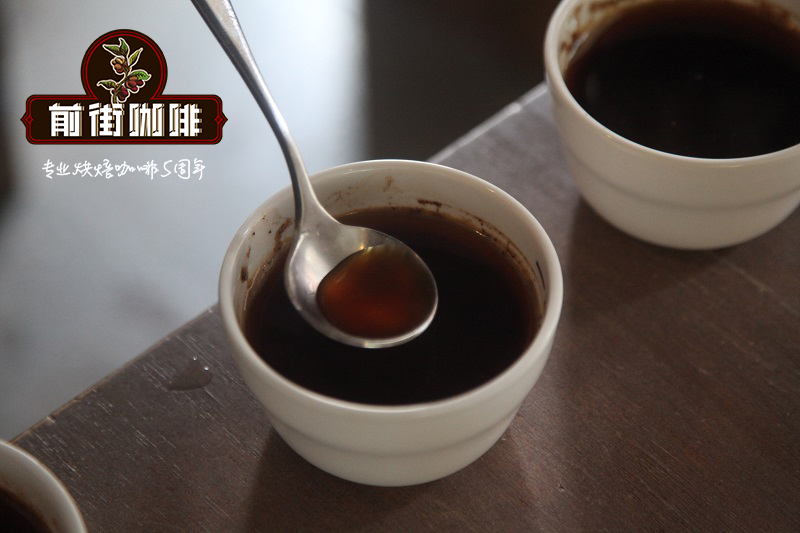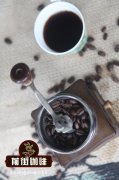Starbucks selects Peruvian Joan Carrie Coffee Bean Story _ Peruvian Joan Carrie Coffee Bean brewing sharing

Professional coffee knowledge exchange more coffee bean information please follow the coffee workshop (Wechat official account cafe_style)
Peru is located in western South America and is famous for its organic coffee. Although Peru is rich in coffee, only 10% of Arabica beans can be called boutique. Many people are not optimistic about Peruvian boutique coffee, but Peruvian coffee has been trying to get better.
Producing areas: Latin America, Joan Carrie region, Karamaca region, Peru
Processing method: washing method
Variety: Kaddura, bourbon
Cooking method: classic hand flushing
Flavor description: juice-like acidity, red apple and sweet lemon flavor, and cocoa-like supple taste
Personal experience: this bean has medium acidity and supple taste. I think ice drink can stimulate the pleasant and sour feeling like fruit juice.
Starbucks selected ™Peruvian Coffee Joan Carrie beans
Coffee bean information:
Origin: Latin America
Processing method: washing method
Acidity: medium
Alcohol: medium
Flavors: juicy acidity, red apple and citrus lemon flavors, and the supple taste of cocoa.
Recommended brewing: French kettle
In the Juncali region of Peru, coffee experts are providing technical support for sharing knowledge with a new generation of growers. They work together to improve the quality of coffee beans and create a classic and excellent coffee flavor experience in your cup. There is a chunchuca valley surrounded by cliffs in remote areas of the northern highlands of Peru, providing excellent conditions for the growth of coffee beans. Joan Carrie's rugged landscape makes road infrastructure a challenge, and transporting coffee beans to the processing plant is not easy. These dedicated growers help each other, reserved industry, people admire, but also let each mouthful of coffee are permeated with a clear lemon-like sweet and sour taste. This is also the third year that Starbucks has purchased this coffee in the world.

Card design: the label design is inspired by the coffee craftsmanship handed down from generation to generation in the remote Peruvian town of chontali. The coffee comes from a small farm and a group of growers who depend on coffee production for a living. The close relationship between coffee and people has a profound impact on the art form and design of the label. It uses a ring form to show the hands of growers, showing the characteristics of self-sufficiency in the region. The color palette comes from Peruvian fabric. The typesetting is taken from the handmade murals of Peruvian artists.
Many people are not optimistic about Peruvian boutique coffee, but they do not realize that Peruvian boutique coffee has been trying to get better.
Cajamarca province is such a place that produces high-quality coffee. Not long ago, Peru Aririo shared by Ming came from here. And today's protagonist, Joan Carrie, Peru, is also from this magical province.

Chontali is a small town in Chunchucas Canyon, Cajamarca Province. The land around it is 1200 to 2100 meters above sea level. The mountains of Joan Carrie are steep, but the slopes become softer toward the top, which allows coffee to be grown. At the same time, soil pH value is the best for the development of coffee agriculture, but in steeper areas, soil erosion may be a problem. As a result, some farmers level the land to protect the soil.
Joan Carrie began growing coffee in the 1950s, and since then the area has boomed and production has steadily increased. Coffee farmers here have an average of 2 to 3 hectares of coffee growing land per person, and they harvest ripe cherries between June and October.
And all this is far from enough, in order to better get high-quality Peruvian coffee beans, Aladino Delgado led the coffee growers in the region, continue to work hard, and finally got this secret Lujun Carrie.
Aladino Delgado
Aladino Delgado is collecting coffee berries.
Aladino Delgado began to prepare to process the coffee berries he had collected
Aladino Delgado is washing coffee beans.
Aladino Delgado is drying coffee beans.
It is Aladino Delgado's willingness to work with local suppliers and other growers to train in coffee production and processing, which makes Joan Carrie's coffee better and better.
After all, for them, never enough.
02
Joan Carrie, Peru
Coffee bean information
Image: Mr.Chen
Origin: Chunchucas Valley Joan Carrie, Cajamarca Province, Peru
Processing method: washing method
Acidity: medium alcohol: medium
Caption: juicy acidity, red apple and sweet lemon flavors, and cocoa supple taste
03
Joan Carrie, Peru
Card design
The design of the card is inspired by the coffee craftsmanship handed down for generations in the remote Peruvian town of Jooncari, which comes from a small farm and a group of growers who depend on the coffee industry for a living. The close relationship between coffee and people has a profound impact on the art form and design of the label. It uses a ring form to show the hands of growers, showing the characteristics of self-sufficiency in the region. The tone of the card comes from ancient Peruvian fabric, while typesetting is taken from the handmade murals of Peruvian artists.
Joan Carrie has already met with you at Starbucks selection before.
This time, it is its third appearance.
04

Peruvian coffee Joan Carrie brewing and sharing
1. Classic hand flush (ice)
Ditting5.5 file, 30g powder, 220g ice cubes, 200g water (including 60g steamed water), steamed for 15s.
Description: candied lemon, pleasant and sour, supple taste, cocoa.
two。 Six cups of Chemex (hot)
Ditting8 file, 21g powder, 350g water, four or six cooking (55g, 75g, 70g, 70g, 70g).
Description: candied lemons and apples, supple acidity, supple taste, long-lasting cocoa finish.
3. Japanese handmade
Ditting5 file, 20g powder, 260g water.
Caption: more obvious candied lemon, bogy thicker, smooth taste, obvious cocoa aftertaste.
4.V60 (hot)
Ditting8 file, 20g powder, four or six cooking (50g, 70g, 60g, 60g, 60g, 60g).
Description: candied lemon, apple and other rich mixed juices, smooth taste, long-lasting cocoa finish.
05
Peruvian Joan Carrie cooks and shares
Since 2015, Starbucks has funded 16 social projects in 12 countries. The picture shows a multi-purpose stadium built by Starbucks Zhenxuan for Campo Azul Village, Colombia.
From bean to cup. This is a process full of hardships.
So, please cherish every coffee bean. 💗
END
Important Notice :
前街咖啡 FrontStreet Coffee has moved to new addredd:
FrontStreet Coffee Address: 315,Donghua East Road,GuangZhou
Tel:020 38364473
- Prev

Introduction to the flavor and characteristics of Peruvian cahamaka coffee beans _ how to make Peruvian EL CHAUPE coffee beans
For more information on coffee beans, please follow the coffee workshop (Wechat official account cafe_style) Peruvian coffee, which is famous for its organic coffee. Peru (Spanish: Per; Quechua, Aymara: Piruw), the full name of the Republic of Peru (Spanish: Repblica del Per), is a country in western South America. Flavor and taste characteristics: excellent
- Next

What is the taste of Peruvian High Grown high-planting coffee beans? introduction to Peruvian coffee bean grading system
Professional coffee knowledge exchange more coffee bean information please follow the coffee workshop (Wechat official account cafe_style) Peru High Grown Peruvian high-planting coffee beans Peruvian coffee growing area is mainly located in the central Chanchamayo region, and the two most famous planting areas are Villa Rica and La Merced, respectively, with Typica Arabica as the main planting variety; Peruvian coffee
Related
- Detailed explanation of Jadeite planting Land in Panamanian Jadeite Manor introduction to the grading system of Jadeite competitive bidding, Red bid, Green bid and Rose Summer
- Story of Coffee planting in Brenka region of Costa Rica Stonehenge Manor anaerobic heavy honey treatment of flavor mouth
- What's on the barrel of Blue Mountain Coffee beans?
- Can American coffee also pull flowers? How to use hot American style to pull out a good-looking pattern?
- Can you make a cold extract with coffee beans? What is the right proportion for cold-extracted coffee formula?
- Indonesian PWN Gold Mandrine Coffee Origin Features Flavor How to Chong? Mandolin coffee is American.
- A brief introduction to the flavor characteristics of Brazilian yellow bourbon coffee beans
- What is the effect of different water quality on the flavor of cold-extracted coffee? What kind of water is best for brewing coffee?
- Why do you think of Rose Summer whenever you mention Panamanian coffee?
- Introduction to the characteristics of authentic blue mountain coffee bean producing areas? What is the CIB Coffee Authority in Jamaica?

